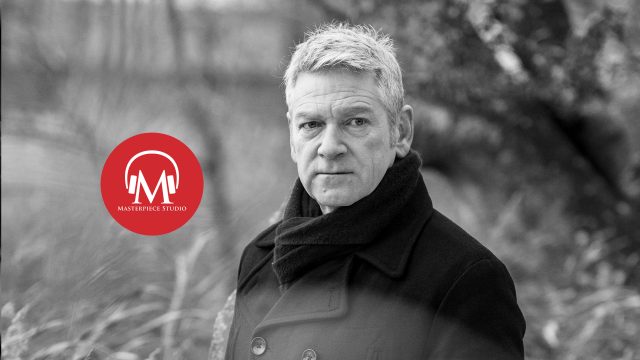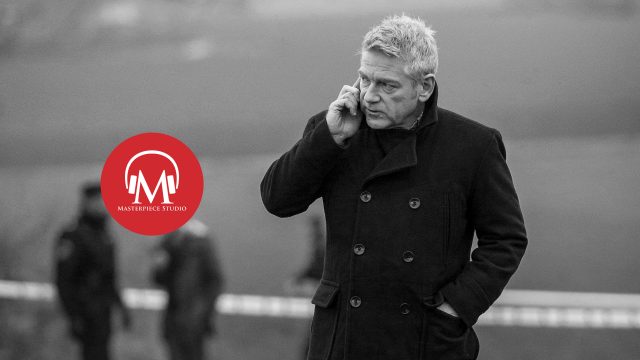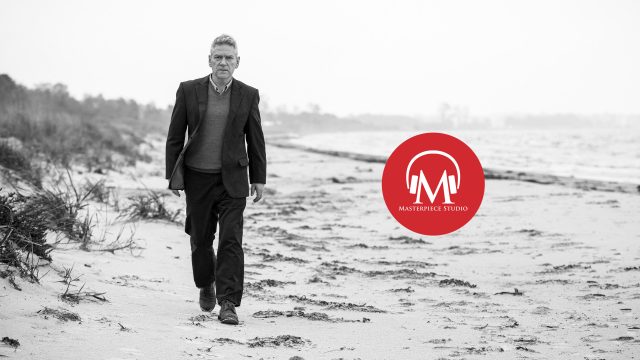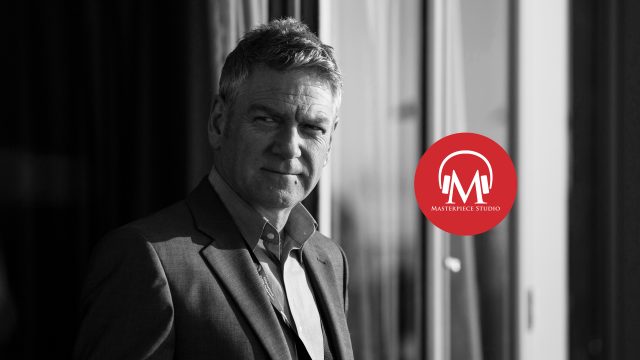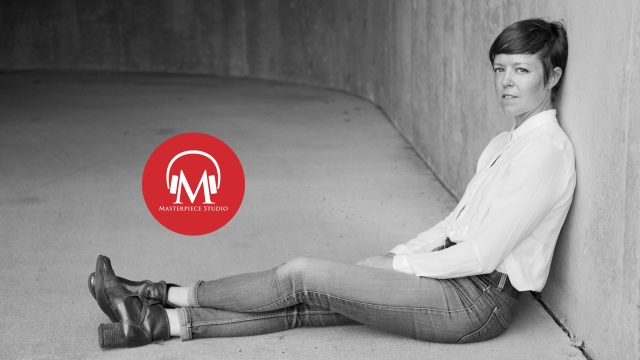From dealing with big cats and non-stop rain to guiding Kenneth Branagh’s last performance as Kurt Wallander, Benjamin Caron describes all of the challenges that came with directing Wallander’s final season.
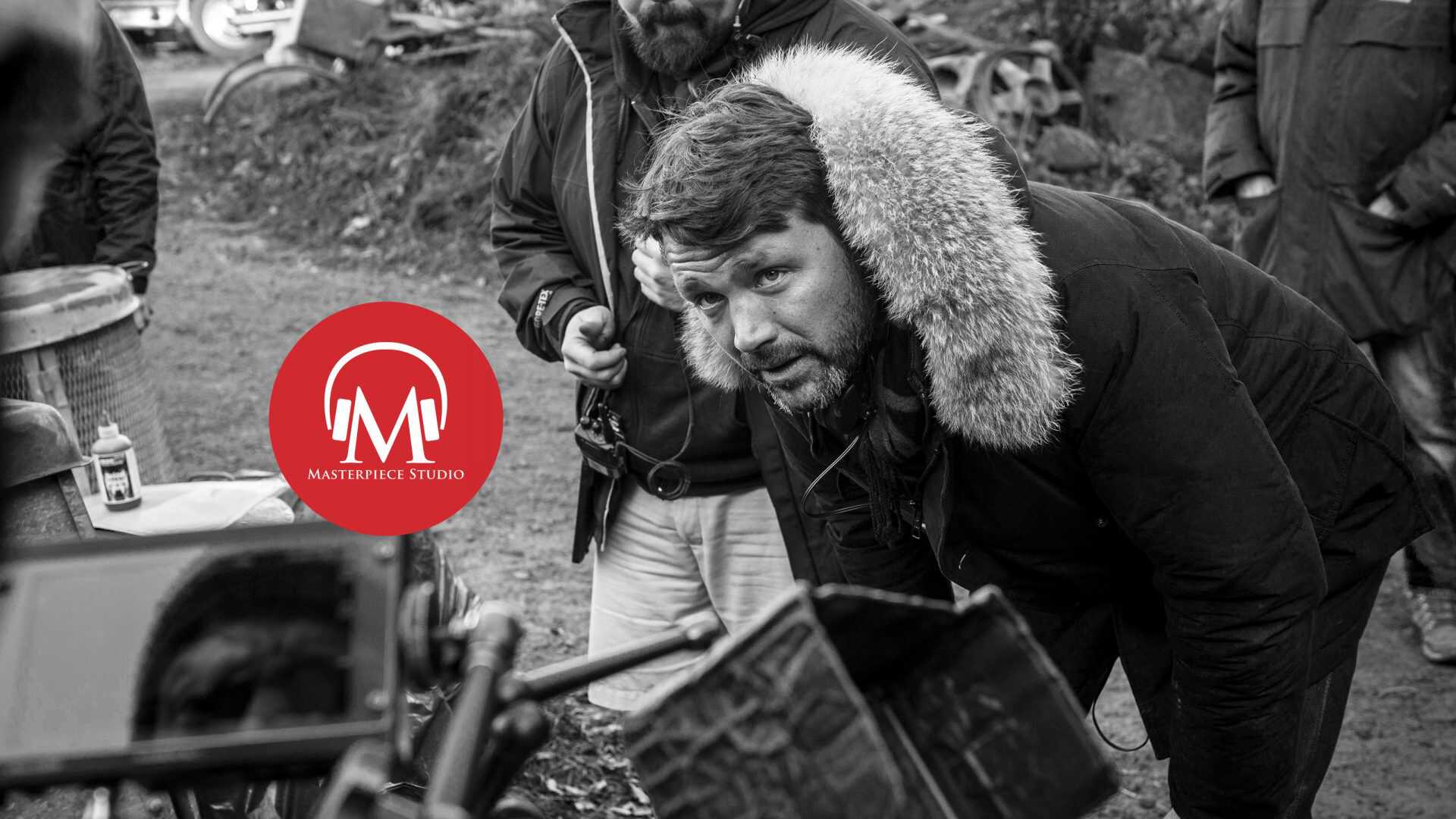

Directing Wallander: “The Biggest Challenge of My Career”
Released --:--
Download and subscribe on: iTunes | Spotify| RadioPublic
Transcript
Jace Lacob (Jace): MASTERPIECE Studio is brought to you by Audible. For a free trial, go to Audible.com/Masterpiece.
Jace: I’m Jace Lacob and you’re listening to MASTERPIECE Studio.
Director Benjamin Caron was known for his work on the UK shows Skins and My Mad Fat Diary, but his love of the Wallander series made him the perfect candidate to direct the final season.
When Benjamin later signed on to the project, he found out just how intense directing Wallander would be.
Each 90-minute episode — from “The White Lioness” to “A Troubled Man”– is jam packed with stunts, complicated camera work, and intense emotional storylines…not to mention high-profile actors like Kenneth Branagh.
CLIP:
Benjamin Caron: He wants to be challenged. He wants you to direct the film, you know. That’s the very first thing he said to me, which was incredibly liberating and terrifying at the same time.
Jace: In this episode, Benjamin Caron reveals what it was like to work with Kenneth Branagh, African big cats, and non-stop rain as he looks back on directing the climactic final season of Wallander.
Jace: Welcome.
Benjamin Caron (Benjamin): Thank you.
Jace: Now how familiar were you with Wallander or the Henning Mankell novels before getting the gig?
Benjamin: Very much so. I’d seen all of the previous films that they’d made and actually had read most of his novels. So no, I was a huge, huge fan. I think actually even when the first series went out, I remember sitting at home, with my wife, watching it, wishfully thinking that one day I might have the opportunity to direct Wallander. So you know, previously the directors had only sort of directed one film, and so actually to be asked to do all three was a great honor.
Jace: I mean those three episodes essentially function as three separate films. What was your approach in terms of directing the series’ final episodes?
Benjamin: Well I guess, you know, when we first met Wallander in the first series eight years ago the characters have changed significantly.
As a filmmaker, it sort of offers so much, you know, I guess the landscapes, these vast, vast skylines, the weight of melancholy that sort of feels heavy on your soul; it’s certainly not for the fainthearted.
And I think…You know, there are many, many, many detective, dramas, films that are made, you know, it’s a very useful trope to explore.
But I think, Henning’s access to the human soul is quite unique.
I feel really privileged to have met him, actually. He came to set when we were filming on Wallander. I remember once he walked on set and he sort of came up to me and he said, “Ben,” he said, “I can tell when I walk onto a set whether it is a good set or a bad set. This is a good set.”
Benjamin: That’s all he said, but… A man of few words, but he saw that we were creating something great and there was no more to be said about that, I think.
Jace: Now these three episodes were shot on location in Sweden, Denmark and Cape Town, South Africa. What were the challenges and opportunities that those specific locations offered?
Benjamin: In Sweden you have this sort of…It’s almost like a Scandi Western you know; instead of a horsie he’s got a Volvo driving through these wonderful landscapes that, you know, sort of express the drama. I mean, it’s beautiful but bleak. You know, these heavy, grey skies feels like it’s sort of pressing down on the characters, you know, especially Wallander, which give the country a kind of melancholia, which is visually striking and I guess also right for tales of dark deeds.
I guess one of the things with working in Sweden was that, we were shooting over 12 weeks, and for the first four weeks it literally rained every single day. It’s… I think, you know, we suffered as well. I’ll put it that way.
So Sweden definitely had its testing times in terms of the weather.
I mean, one of the interesting things with “The White Lioness”… It’s actually a scene that didn’t make the film where Wallander’s leaving Mubasha’s hut, and he came across a white lioness. Now, this was a…maybe a hallucination possibly; it’s sort of up to the viewer.
But we filmed it very late in the day, and I guess one of the things…If you are working with animals, I would suggest definitely film with them early in the day because — and now I say this it makes sense — as it got later, the cats get tired and they call them “flat cats.” So… so we had me… so we had me and Ken in a very controlled area where if the cat did run towards us he could just step into the cage and they’d close the door. So it’s all carefully managed.
But this cat really wasn’t performing and every time it would sort of come into the open it would lie down. So about an hour later of many people banging all sorts of things — drums — trying to get this beautiful lioness to sort of stand up and look towards Ken, we… The animal handler said, “We’ll just bring it a little bit closer.”
And Ken and I just looked at each other and went, “No no, it’s fine. I think we’ll leave the…I think we’ll just leave the scene. We’ll be able to make something of it.”
So sadly, it didn’t make the film, but probably for good reason, for mainly the cat obviously just went, “I’m not being part of your film, sorry. I’m not playing game.”
Jace: And you mentioned Ken. What was your experience like directing Sir Kenneth Branagh?
Benjamin: Well… I mean, first off, it’s a real privilege. I mean, as a young director, I guess it can seem intimidating at first until you meet him. And for me, you know, he’s an inspiration to work with, you know. He wants to be challenged. He wants you to direct the film, you know. That’s the very first thing he said to me, which was incredibly liberating and terrifying at the same time.
And I think with him, you know, he never…Firstly, he never gives you the same performance and that’s a good thing, trust me. It’s incredible. It makes it incredibly hard to choose later in the cutting room. Ken, you know, he feels everything very deeply and each crime takes its toll on him, and I think, you know, he wants that truth represented onscreen, and for me, I think he delivers that every time.
Jace: Turning our attention to the specific episode: so in “The White Lioness,” there is an incredible sequence in which Kurt pursues Mubasha through a township. Can you discuss filming that particular scene, and what were the inherent challenges of that shoot?
Benjamin: I mean, one of the interesting things was with “The White Lioness”: I came very late to that project. Originally, I was only meant to be directing, “A Lesson in Love” and “The Troubled Man.” So it was a Sunday night, and I suddenly found out that I was– needed to step onto the project on literally Monday morning.
So the producer handed me the script, I spent the evening reading it — I think I was up until about 4:00 in the morning — and a car picked me up at 6:00 AM, and I was on set with actors I’d never met before, a script I’d only read the night before, and locations I’d never seen…
And so you know, that was, well, probably one of the biggest challenges of my directing career. And it, I guess it just meant that we just had to react in the moment, on the day: “Right. How are we going to do this?”
CLIP:
Kurt: Hi…Bombas?
Locals: (Laugh)
Kurt: Bombas?
Old man: Excuse me. Left up there. Up there.
Kurt: Okay.
Old man: Left.
Kurt: Alright. Thank you.
Old man: [inaudible]
Kurt: Alright.
Benjamin: But in terms of the local community, they… I think they’re probably very used to film crews coming in and making drama, film. I mean, I’d seen the most amazing opera called Carmen that was shot all in a township in South Africa — I’d seen that many, many years ago. And so, you know, we were very lucky to go into some of the homes and meet some of the locals and you walk inside and it’s incredibly palatial.
So that was, I mean, that was amazing to see, and you sort of think, you know, “This community lives here. They all…” It’s not as scary as maybe people make out. So yeah. I think that the only hazard in this was literally just the wind and the sand in your eyes. Apart from that, it was actually a very successful and enjoyable shoot, and I think everyone had an amazing time being in there because the people were so kind.
Jace: Now one of my favorite scenes in “A Lesson for Love” is when Kurt says goodbye to Baiba at the train…
CLIP:
Baiba: You’ll be coming to Riga soon?
Kurt: Soon as I can get some time off. I’ll try not to get lost on the way.
Baiba: Well. Bye.
Jace: …and he whispers, “I love you,” through the glass, and we don’t see Baiba’s face or hear her reaction. Why was it important to shoot their farewell this way, at a distance?
Benjamin: For me as a filmmaker, I sort of wanted to show that already he had made that decision in his mind to cut her off, and so maybe not to give her the closeup of looking at him to show visually that he’d drawn the line, that that was it. Sadly it was a heartbreaking moment, but that he, you know, he… He’s in that moment left alone, you know. He’s made a decision not to pursue love because he doesn’t feel that, you know, it would be fair to Baiba, so yeah. And in that moment he is alone.
Jace: One of the most heartbreaking scenes in this entire series is the very King Lear-esque scene on the hill. Can you talk about shooting that scene between Kurt and Linda?
Benjamin: Well you know, that scene is one of those scenes that sort of sits there and is in the back of your mind the whole time, not just me, but for Ken, for Jeany, you know, who plays Linda.
I think they had had many sleepless nights because as a filmmaker or actors, you know, it’s up to you to try and make it as truthful as possible, you know. You know that a lot of people are going to be watching this that may have experienced or seen or witnessed early onset Alzheimer’s. And so, you know, we are literally baring our souls in hope that people will see it, the tragic scene, for what it is.
CLIP:
Linda: Dad?
Kurt: No I gotta be…I gotta…
Linda: It’s okay!
Kurt: No! Take that taxi. Gotta take a taxi!
Linda: Dad. Dad! Come on just give it…Stop!
Benjamin: That scene will stay with me forever for many reasons: for how extraordinary Ken and Jeany were, how it all came together brilliantly on the day, and actually personal reasons. That day was the day I found out I was going to be a father.
My wife was out there. We moved out Sweden for five months and that morning she told me I was going to be a father. And I remember being up on the hillside, and we shot the first take of the scene, and I was literally in tears, absolutely in tears, not only just from the magnificent scene that these, you know, watching these two actors, but also I guess, somewhere underneath I was sort of, you know, I was about to be a father. So I think that will be actually in my memory for a long, long time.
Jace: The final scene of “The Troubled Man” begins with a conversation between Kurt and his father, Povel, and it has a very specific composition with Povel facing away from Kurt.
Given that Mankell’s father-in-law was Ingmar Bergman…
Benjamin: Yeah.
Jace: …is there perhaps a Bergman homage to be found here?
Benjamin: There definitely is…Yes, there is a Bergman homage. There’s also…I mean that particular image is not Bergman, it’s an image that I remembered from an Antonioni film, “L’avventura,” where there’s a frame in there: there’s a man and a woman and he’s got his back to us and the woman facing frontwards. And it…Another one of those images that’s sort of burnt on my memory — I mean who knows why these things stay with you — but I sort of felt that was appropriate for this one single shot.
CLIP:
Kurt: My life doesn’t join up. I can’t remember.
Povel: Someone else will remember. Someone will remember for you.
Benjamin: It was unusual enough for it to feel that this wasn’t real, that this was in his mind. And, you know, I hope it worked — you never know when you do these things — but yeah…There you go.
It’s very difficult to post-rationalize decisions you make, and it’s also hard for me because you want to leave the imagination to your viewer and not be too prescriptive in what you were thinking. So I’m always a little bit worried about sort of saying exactly what was in my mind because I’m sure other people have very different variations of what that is.
Does that make sense?
Jace: It does. I’m going to press you though.
The final shot of the entire series…
Benjamin: Yes.
Jace: …has three generations of Wallanders on the beach: Kurt, Linda and Klara. When asked if he’s okay, Kurt says, “Yeah, I’m fine.”
How should the viewer read that final scene, as a happy ending or a bittersweet one?
Benjamin: How did you read it?
Jace: As both.
Benjamin: Well that’s good. I think that’s what I mean. I mean, I think… That particular day we filmed was remarkable. We…As I said, we had suffered all the elements — wind, rain, snow — I mean freezing cold temperatures, and that particular day when we shot that scene it felt like summer. The, the clouds had parted and it was beautiful, beautiful sunshine streaming through. And I think that day in particular, the sun came out, it ma-, it offered us a small glimmer of hope.
CLIP:
Linda: You okay?
Kurt: Yeah. I’m fine.
Benjamin: Now listen, I’m not saying that Linda is going to have an easy time dealing with a, you know, old curmudgeon Wallander who’s going to have Alzheimer’s, you know; look what happened to Povel. But, you know, I think, he’s got his family around him and they will be there to support him, which for me is the glimmer of hope and of course it’s bittersweet because…But life…It’s not quite your Hollywood ending because it has a little bit of vinegar sort of dropped into the champagne, let’s say.
Jace: MASTERPIECE Studio will be back in three weeks to take you behind the scenes of all your favorite MASTERPIECE shows…
In the meantime, you can check out our past episodes — including our interviews with the directors who worked on Downton Abbey — at pbs.org/masterpiece, and on iTunes or Stitcher.
Be sure to subscribe to the show so that you don’t miss out on any of the future action…including a few surprises.
MASTERPIECE Studio is hosted by me, Jace Lacob. Kathy Tu is our editor. Rachel Aronoff is our production coordinator. Special thanks to Barrett Brountas and Nathan Tobey. The executive producer of MASTERPIECE is Rebecca Eaton.
MASTERPIECE Studio is brought to you by Audible.
Sponsors for MASTERPIECE on PBS are Viking River Cruises, Audible, and The MASTERPIECE Trust.
Wallander Podcasts 5 More Podcasts
MASTERPIECE Newsletter
Sign up to get the latest news on your favorite dramas and mysteries, as well as exclusive content, video, sweepstakes and more.











